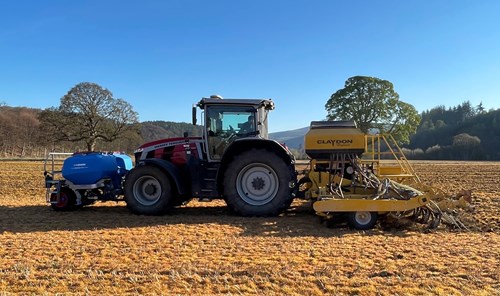Spring Cropping Crossroads – Which Way Now?

Looking back at 2024 it would be fair to say that it hasn’t been a year of note nor one to remember in terms of cropping profitability. A wet spring (again), a lack of prolonged sunshine, drawn-out harvest (weather, again), moderate yields in general coupled with deflated grain prices have led to comments and genuine concerns amongst farmers as to whether it would be worth growing malting barley, for example, in 2025? Reduced demand from distilling companies currently does not bode well for any enticing premiums.
Couple those thoughts with a review of fixed assets, possibly you have ageing machinery – will that combine go through another harvest? Could you, or would you, want to finance another one? Perhaps there is an ageing workforce too where retirement looms large for either yourself or a key member of your workforce.
What If I Didn’t Sow That Barley?
For a start you would have empty fields. If you don’t fancy the thought of getting the run-around from four-legged animals or perhaps containing them within your blocks of land would involve considerable investment in wire and post, not to mention grass re-seeds then perhaps letting someone else crop the land would be more beneficial. But what are the pitfalls and things to be aware of? Some of which are presented below.
Let It Out
You could just offer the land under a straightforward rental basis. After agreeing a suitable price per acre, you just take the cash and let your neighbour get on with it. The main concern with this approach however is that you may feel less involved with the farming process and would effectively just become a rent collector, possibly losing your ‘trading activity’ from a tax point of view and potentially jeopardising your “active farmer” status from a subsidy point of view.
Keep It Simple?
There are many simple ‘Contract and Sale’ type agreements around, many conducted with just a handshake, where the neighbour as contractor does all the work including purchasing all the inputs, then submits an invoice for those growing costs to you as the farmer. You would then counter that invoice with an invoice of your own for ‘sale of standing crop’ which will be a higher amount calculated to include the rental fee for the land. The exchange of invoices effectively allows both the barley sales (rent) and crop inputs to hit your profit and loss account creating a trading profit, one which however (in terms of the arable operation) will be exactly the same each year on a per acre basis. Again, here you would need to be mindful to maintain your subsidy active farmer status.
Poorly structured arrangements could be treated by HMRC as investment income in the same way as simple letting of land can be again possibly losing that trading activity, whereas a properly drawn up Contract Farming Agreement (CFA) would be treated as trading income.
If It’s Worth Doing..
A well drafted Contract Farming Agreement (CFA) has the ability to keep that trading farmer status and would fully maintain your active farmer status under the current subsidy regime. The benefits of ‘trading’ farmer status:
- Ability to offset losses against non-farming income.
- Greater ability to claim tax relief on general overheads.
- Use of farmers averaging.
- Profits treated as earned income (can claim relief on profit contributions).
A CFA is a straight-forward binding agreement whereby you as the landowner, known in the agreement as “The Farmer”, would formally engage the services of your neighbour (or any other designated farmer or contractor) as “The Contractor” on pre-arranged performance terms including a basic fee for both parties and then a profit share at the end of the season. You would continue to trade in your own right and essentially remain as proprietor of the farming business. Crucially, in this new “management consultancy” role, you would help shape the farming policy, attend farm management meetings and administer the agreement.
In terms of taxation, being seen to be an active farmer is the key. With the less formal agreements there is effectively little or no risk for the farmer and you are seen purely as a landlord and income from the venture could be treated as unearned income. The more formal agreement, whereby a separate account is usually drawn up, is more robust as you would be directly involved in the decision-making process and sharing the risk. The element of RISK is the key.
Five Top Tips
- Review last year’s harvest results, add up your costs and see what margin you are making.
- Get it in writing – ensure a robust legal document is drawn up.
- Consult your accountant for up-to-date tax advice.
- Prepare a gross margin and budget for the venture, based on your farm average results.
- Trust – the most important part of any CFA is trust between you and the Contractor. Choose the right person.
David Simpson, Senior Agricultural Consultant, David.Simpson@sac.co.uk

Unearthed is the exclusive SAC Consulting members' monthly newsletter. Unearthed offers insights and tips from our experts on what we think is in store for farming and crofting in the coming months in order to protect and enhance your business.
Posted by Unearthed News on 20/01/2025
